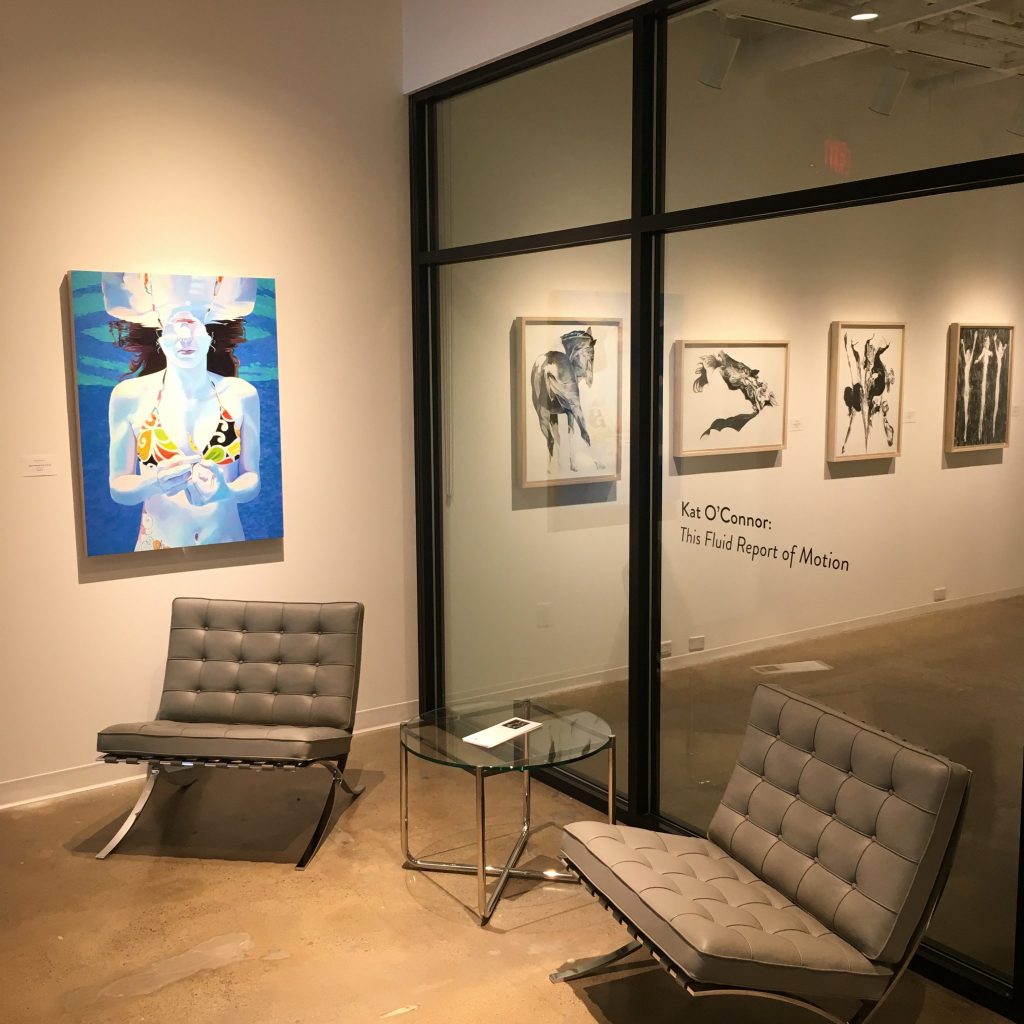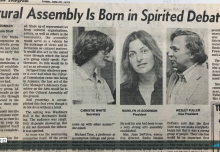

Kat O’Connor: “This Fluid Report of Motion” was on view in the East Gallery in the summer of 2019.
No Such Thing as a Dumb Question
Selecting Solo Exhibitions
In the usual course of things, we at ArtsWorcester get a lot of questions. Through these questions, we learn that how we produce exhibitions is sometimes a mystery to artists and gallery-goers alike. In these posts, we answer some of the questions we are most often asked. Send in what seems like a mystery to you to Allie (allie “at” artsworcester.org), and we’ll answer your questions!
How are solo exhibitions selected?
The process ArtsWorcester uses to determine solo exhibitions in our galleries and placement in our corporate art program is a juried process, carried out by a large committee of volunteers in which each member serves as a juror. Each of them holds extensive experience as curators, educators, collectors, and/or artists, and are willing to spend several hours reviewing and discussing proposals for us.
Traditionally, ArtsWorcester calls for exhibition proposals in the spring, in preparation for an exhibition season that runs the next September through July. Artists who feel that they have a body of work that’s ready for a solo exhibition respond with an exhibition proposal. They upload descriptions of their desired exhibitions, statements about their work, photographs of proposed pieces in that exhibition, and the information about those photographs—dimensions, medium– that the panel needs to imagine them as artworks.
The panel works through a “blind jurying” process, meaning that they don’t see the names of those artists submitting work. They gather together to identify, through group consensus, the exhibitions they believe ArtsWorcester should produce in the next year. The panelists are shown a PowerPoint presentation of artwork proposals, and they give each one a numerical score. Then staff compiles their individual numbers to produce a ranked list of exhibitions, which is returned to the panel for further discussion and recommendations. Sometimes, an artist whose work is under consideration is asked to bring in samples for consideration, after the panel discussions.
ArtsWorcester staff has no voting rights in this process. Our job is to determine how many solo exhibitions we can produce in a given year, take the ranked list generated by the panel, and work to place their top choices. We place exhibitions in the galleries we think will work best for artists and audiences, and, as artists can make proposals for exhibitions not yet complete, work with the artist to make sure that the exhibition will be ready when we want to show it. Some proposals are perfect for our gallery at the Hanover Theatre; some are ideal for corporate venues; some need to be in the East Gallery. We also consider what other exhibitions or events might be taking place at the same time.
The most important thing we do, and something that’s unique to ArtsWorcester, is to ensure that every artist who makes a proposal can receive critical feedback on it, if they so desire. Staff takes notes during the panel conversation, and relays the responses of the panel to the artist, if desired. Not all artists want to hear what the panel thinks, but those who do benefit from the feedback. In this way, we make sure that every artist who takes the time to make a proposal gets something out of it, regardless of whether it’s produced as an exhibition or not.




